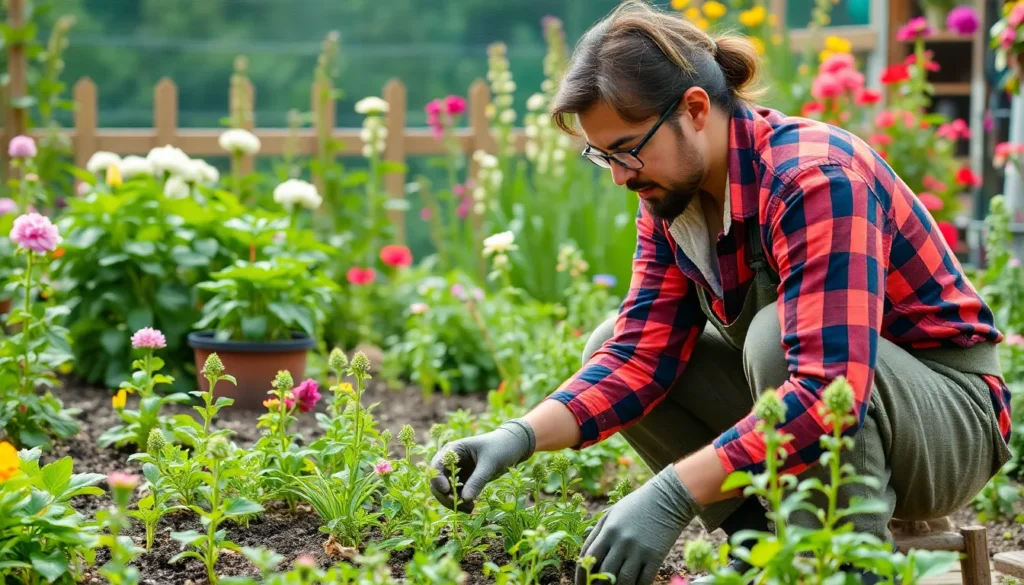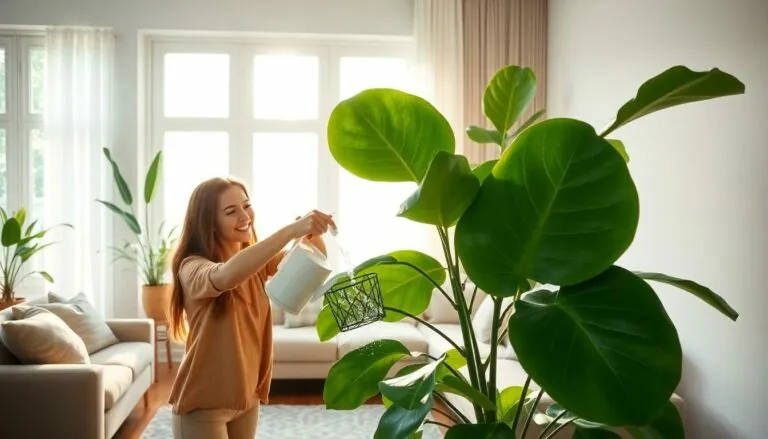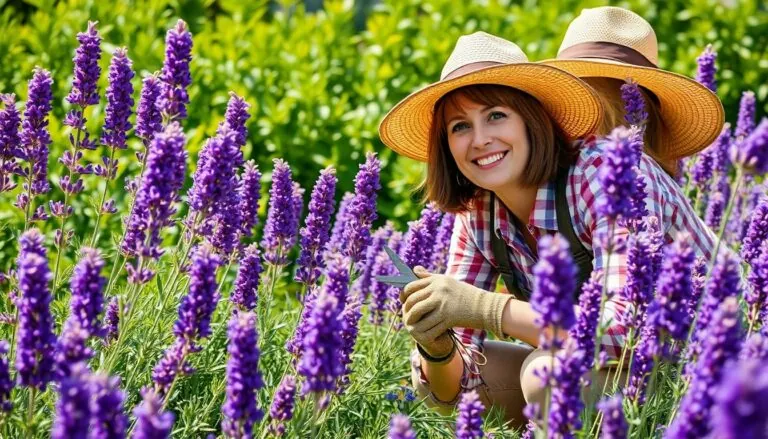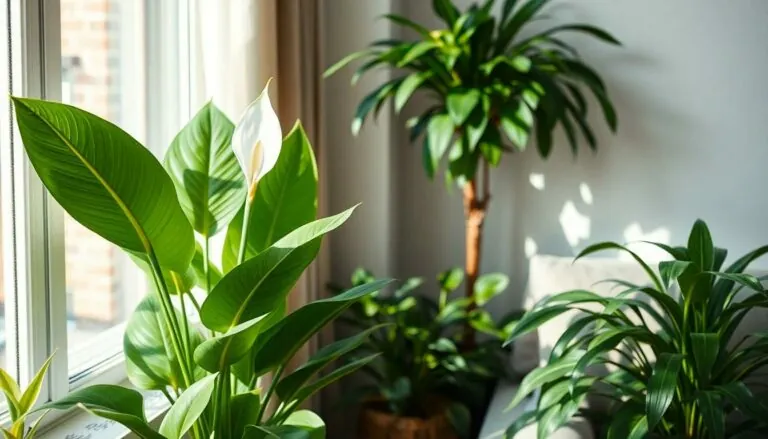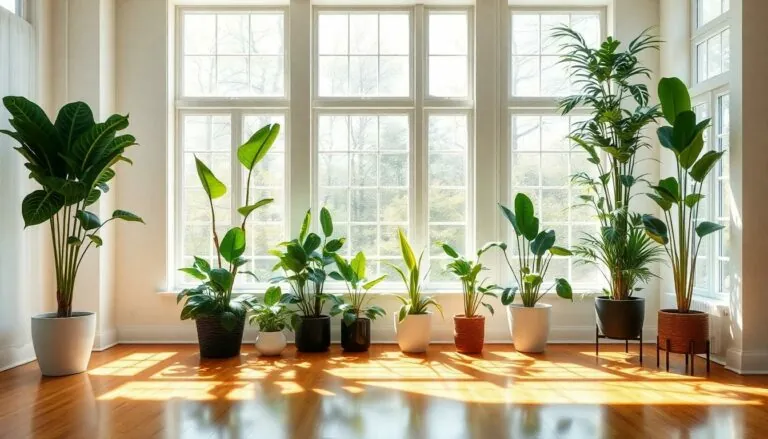Table of Contents
ToggleIf you’re looking to add a splash of vibrant color to your garden, the Indian shot plant might just be your new best friend. With its striking foliage and bold flowers, this tropical beauty not only brightens up any space but also brings a touch of exotic flair. But before you start dreaming of lush greens and fiery blooms, you’ll want to get the lowdown on how to care for this lively plant.
Indian Shot Plant Overview
The Indian shot plant, known for its vibrant beauty, enriches garden spaces with striking foliage and bold flowers. It thrives in tropical climates and requires specific care to flourish.
Botanical Characteristics
Indian shot plant, scientifically called Canna indica, features large, lush leaves and can grow up to 6 feet tall. Leaves, sometimes reaching 24 inches in length, are lance-shaped and can exhibit a variety of green hues. Flowers bloom in clusters, showcasing vibrant colors including red, orange and yellow. The plant also produces unique seed pods that look like rounded capsules, contributing to its visual appeal. This perennial plant thrives in sunny locations, flourishing best in well-drained soils.
Common Names and Varieties
Also known as cannas, Indian shot plant has several common names, including arrow root and canna lily. Many cultivars exist, specializing in different flower colors and sizes. Popular varieties include ‘Tropicanna’, known for its striking variegated leaves, and ‘Black Knight’, featuring dark foliage and vivid red flowers. Each variety offers distinct characteristics, allowing gardeners to choose based on preference. Selecting the right variety enhances garden aesthetics and biodiversity.
Ideal Growing Conditions
The Indian shot plant thrives under specific conditions that maximize its growth potential. Providing the right environment ensures healthy foliage and vibrant flowers.
Temperature and Humidity
Temperatures between 70°F and 90°F promote optimal growth for the Indian shot plant. Exposure to cooler temperatures below 50°F can hinder its development. High humidity levels ranging from 50% to 70% create an ideal atmosphere for this tropical plant. Maintaining this humidity can enhance flowering and overall plant vigor. If humidity is low, consider misting the leaves or placing a humidifier nearby.
Soil Requirements
The Indian shot plant prefers well-draining soil with a pH between 6.0 and 7.0. Amending the soil with organic matter, such as compost, improves nutrient availability and drainage. Good drainage is crucial to preventing root rot. A mixture of loamy soil and sand works well for supporting the plant’s growth. Regularly checking the soil moisture ensures it remains consistently moist but not waterlogged.
Watering Guidelines
Watering practices significantly influence the health of the Indian shot plant. Consistent moisture is essential for optimal growth but avoiding waterlogged conditions is critical.
Frequency and Techniques
Watering should occur when the top inch of soil feels dry. Typically, this means watering every 2 to 3 days during hot weather. Techniques like deep watering encourage roots to grow and strengthen. Utilizing mulch helps retain soil moisture and regulate temperature. Drip irrigation systems also allow for controlled watering, ensuring the plant receives adequate hydration without oversaturation. Adjust frequency depending on humidity levels and rainfall, ensuring the environment supports healthy growth.
Signs of Underwatering/Overwatering
Underwatered plants exhibit wilting and browning leaf edges. Stunted growth also indicates insufficient moisture. On the other hand, overwatered plants show yellowing leaves with soft, mushy stems. Root rot can develop if soil remains soggy for extended periods. Observing these signs allows for timely adjustments in watering practices. Maintaining a balance ensures that the Indian shot plant continues to flourish in its garden setting.
Fertilization Practices
Fertilization plays a crucial role in maintaining the health and vibrancy of the Indian shot plant. Understanding the right types of fertilizers and proper schedules can significantly enhance its growth.
Types of Fertilizers
Organic fertilizers, such as compost or well-rotted manure, enhance soil fertility and improve nutrient delivery. Slow-release fertilizers provide a steady supply of nutrients over time, making them convenient for gardeners. Liquid fertilizers offer rapid nutrient absorption, leading to quick results in plant vigor. Additionally, balanced fertilizers with equal parts nitrogen, phosphorus, and potassium support overall growth and flowering. Utilizing fertilizers tailored for tropical plants can further optimize nutrient availability.
Fertilizing Schedule
Applying fertilizer every 4 to 6 weeks during the growing season ensures consistent nutrient supply. Start fertilization in early spring when growth begins and continue until early fall before the plant enters dormancy. Adjustments might depend on specific growth conditions and soil testing results. If a plant exhibits yellowing leaves or stunted growth, consider increasing fertilizer frequency. Always water the plant after applying fertilizers to prevent root burn and enhance nutrient absorption.
Pest and Disease Management
Effective pest and disease management is crucial for maintaining the health of the Indian shot plant.
Common Pests
Aphids, spider mites, and thrips frequently plague Indian shot plants. Aphids appear as small, soft-bodied insects, often clustering on young stems and undersides of leaves. Spider mites create fine webs and cause stippling on foliage, leading to reduced vitality. Thrips can damage flowers and leaves, resulting in discolored patches. Regularly monitoring for these pests helps gardeners take immediate action to minimize damage.
Preventative Measures and Treatments
Applying insecticidal soap serves as an effective treatment for many pests. This solution allows for easy contact elimination of insects. Neem oil also acts as a natural pesticide, disrupting the life cycle of pests when sprayed regularly. Introducing beneficial insects, such as ladybugs, can enhance indoor and outdoor pest control naturally. Regularly inspecting plants for early signs of infestation contributes significantly to overall plant health, allowing gardeners to implement solutions before significant damage occurs.
Pruning and Maintenance
Pruning and general maintenance play vital roles in the overall health of the Indian shot plant, ensuring it remains vibrant and attractive.
When and How to Prune
Regular pruning enhances air circulation and encourages robust growth. Prune the Indian shot plant in late winter or early spring before new growth emerges. Remove any dead or damaged leaves to promote better airflow. Cut back faded blooms and any overcrowded stems, focusing on the base to encourage new shoots. A clean pair of pruners ensures clean cuts that minimize the risk of disease. Frequent checks during the growing season help maintain its shape and health.
General Maintenance Tips
Daily checks for pests and disease support healthy growth and blooming. Ensure mulch around the base retains moisture and prevents weeds. Adequate sunlight, ideally full to partial, enhances flowering and foliage. Water consistently, ensuring soil remains moist but never soggy. Fertilizing every four to six weeks during the active growing season provides essential nutrients. Implementing these maintenance practices can lead to a lush and thriving Indian shot plant, contributing to a vibrant garden environment.
Caring for the Indian shot plant can transform any garden into a tropical paradise. By providing the right conditions such as warmth humidity and well-draining soil gardeners can ensure vibrant growth and stunning blooms. Regular attention to watering fertilization and pest management will keep the plant healthy and flourishing. With proper care the Indian shot plant not only enhances visual appeal but also enriches biodiversity in the garden. Embracing these care techniques will lead to a thriving and colorful display that captivates anyone who visits.

